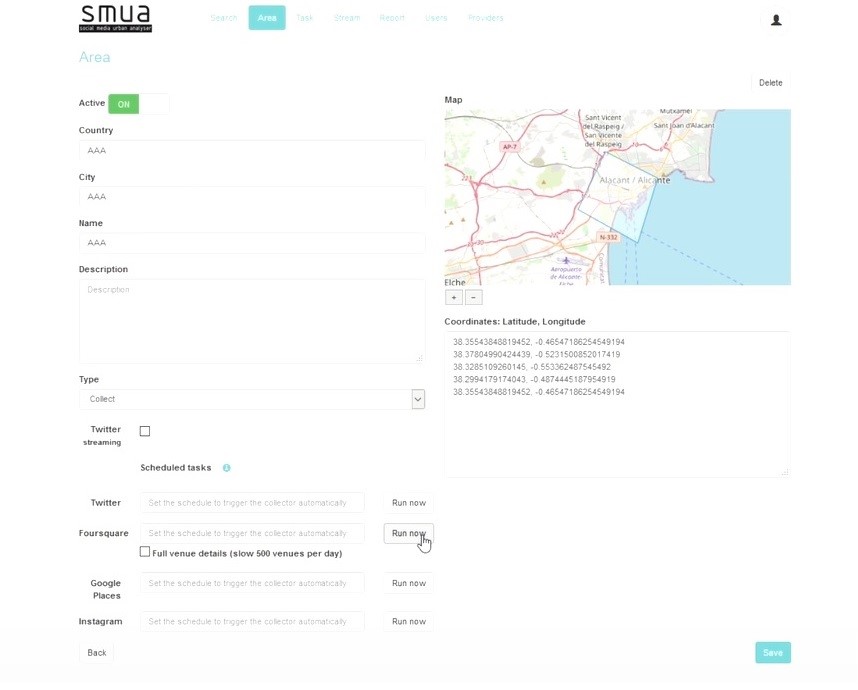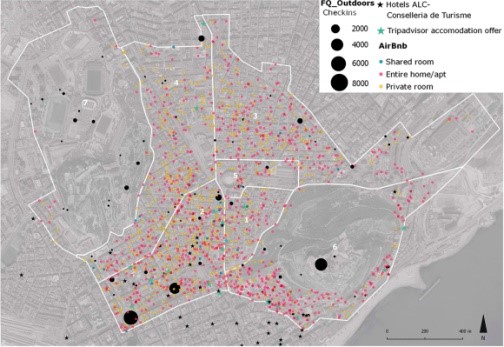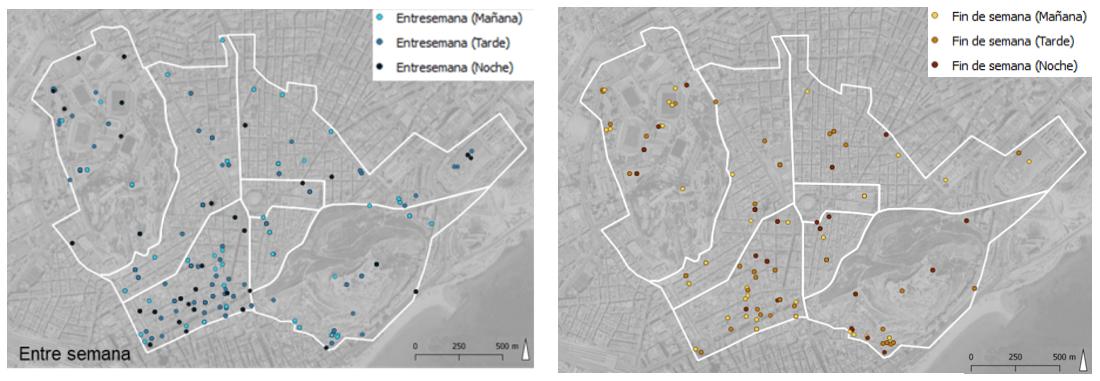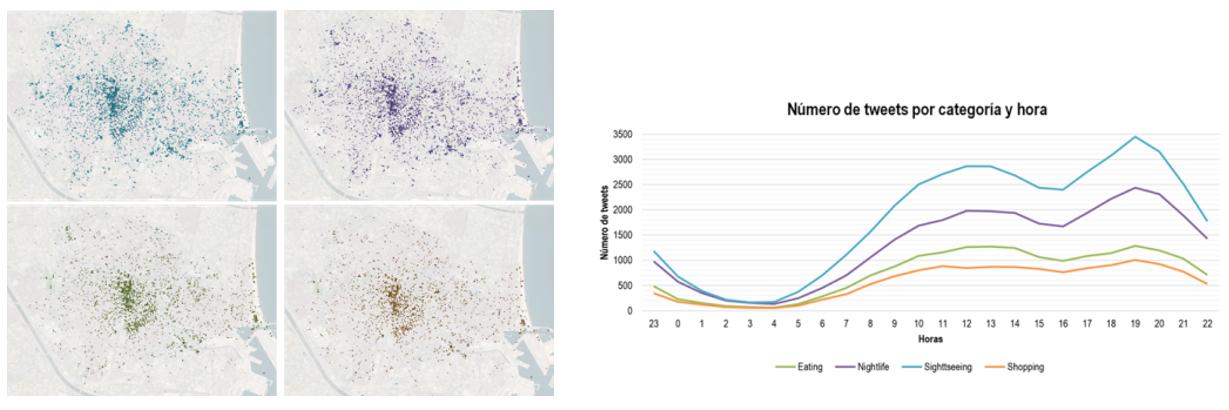Never miss an update from Universidad de Alicante
Create your free account to connect with Universidad de Alicante and thousands of other innovative organizations and professionals worldwide
TECHNICAL DESCRIPTION
It is a web application called SMUA (Social Media Urban Analysis) designed to collect specific data and metadata, which will become part of an ad-hoc database for further analysis and visualisation through an application programming interface (API) (see Figure 1).

Figure 1: SMUA Application Programming Interface (API) view
This technology focuses on those social networks that offer information on economic and urban activities in the city and, at the same time, their data is geolocated, i.e. it allows the exact location of these activities to be known. Of all the social networks currently in existence, Google Places, Foursquare and Twitter are used as the basis for the analysis, complemented by other specific networks such as Instagram, Airbnb, Idealista, Strava and Wikiloc. The reason for this selection is that information can be extracted from them about people's activities in the city and, at the same time, it allows the exact location of these activities to be known.
In terms of the technique and methods used, the filtering and analysis of data from these social networks will allow:
• Diagnose urban problems
The data allows for the identification of the distribution of economic activities according to sectors, preferred urban spaces and/or the spatial-temporal presence of citizens in the city. All of this with the aim of implementing urban policies or actions.
• Monitoring urban dynamics
The evolution of the above data over time makes it possible to understand urban and citizen behaviour in terms of specific actions or policies.
• Establish intervention and urban regeneration strategies
Identify actions or interventions with greater potential for generating urban activity.
• Facilitate public participation in urban processes
Identify citizens' opinions about the city in a non-invasive way.
TECHNOLOGY ADVANTAGES AND INNOVATIVE ASPECTS
MAIN ADVANTAGES OF THE TECHNOLOGY
The main advantages of this technology are the following:
• The data will be completely anonymous.
• This data provides geolocalised information: complete, accurate and up-to-date.
• The information is adapted to the needs of the entity or company.
• It allows agile, flexible and reliable decision-making.
• Allows monitoring of urban problems and/or policies.
• Optimisation of the information to save time and cost in the analysis.
• Creation of detailed reports.
• Adaptation of graphics for web environments.
INNOVATIVE ASPECTS
The present technology systematises the collection of specific data from a series of social networks, relying on filtering and analysis methods that generate a series of products that do not exist on the market, as follows:
1) Economic activities
The identification of the supply of different economic activities, both in terms of their location and the sector or category to which they belong, as well as the citizen demand for these economic activities. Among other aspects: What is the supply and demand for economic and urban activities in a city, including by sector? (see figure 2), what is the concentration of certain activities, both in urban axes and in different clusters, what discontinuities in commercial activity are identified, and what is the best location for a certain business?

Figure 2: View of the supply of hotels and other tourist accommodation in the city of Alicante
2) Presence
The identification of the spatio-temporal presence of citizens according to their concentration in urban areas by time slots and days of the week. Thus, we identify where people are at night, during the day, during the week, during the weekend, which places and commercial activities are most frequented, or which urban public spaces are most frequented.

Figure 3: View of the distribution in days and hours of tweets sent in Alicante
3) Preference
Citizens' preferences for particular urban settings in both public and private spaces allow for the identification of What urban spaces and activities do citizens prefer? or What activities do they carry out in preferred urban spaces?

Figure 4: Presence by activity and time in the city of Valencia
4) Opinions
The opinions that citizens express, through the networks, allow us to know their positions on different urban areas or on certain issues on which opinions are exchanged: What do citizens think about urban spaces and economic activities in the city? or What do citizens think about a certain urban policy or specific issue?
All these analyses make it possible to carry out urban planning diagnoses and proposals for intervention in the city, taking into account the urban reality both from the point of view of economic supply and from the point of view of citizens' preferences in the city.
CURRENT STATE OF DEVELOPMENT
The SMUA application has been operational and working since 2016 and its results have already been validated in several projects developed throughout the world. This is the case of a project in Guadalupe (Mexico), in which citizen presence was identified to reactivate the use of public space in the city; the analysis of the different characteristics of urban activity in structuring roads in Birmingham (United Kingdom); or the identification of third places, as spaces with potential for social relations, in residential neighbourhoods in Gothenburg (Sweden). Other examples in the Valencian Community are: the recognition of green infrastructure in the city of Valencia; the proposals for urban planning intervention based on the diagnosis of social networks in Petrer; or the work carried out for the EDUSI Las Cigarreras project in Alicante, which identified priority itineraries for intervention and reactivation of the area based on the study of different types of activity and citizen presence.
It is therefore a fully validated technology available to companies, organisations and public administrations.
COLLABORATION SOUGHT
The research group is looking for companies or public/private entities interested in using this innovative tool in their analysis and urban or economic projects that will facilitate their decision making.
Ahead of the current Coronavirus outbreak, Innoget is fully committed to contributing to mobilizing scientific and expert communities to find a real solution to the Covid-19 pandemic. Therefore, we're supporting worldwide calls and programs that could help in any aspects of the coronavirus crisis.
Is your organization promoting or looking for innovation or research initiatives to mitigate the Covid-19 outbreak? Email us at covid19@innoget.com to list them.
Channeled through Innoget's online open innovation network, initiatives in the health, virology, medicine, or novel technologies applied to human health, among others, are listed and disseminated to Innoget members -ranging from hospitals, research institutes, scientists, businesses, and public administrations- and innovation partners worldwide.
Create your free account to connect with Universidad de Alicante and thousands of other innovative organizations and professionals worldwide
Send a request for information
to Universidad de Alicante
Technology Offers on Innoget are directly posted
and managed by its members as well as evaluation of requests for information. Innoget is the trusted open innovation and science network aimed at directly connect industry needs with professionals online.
Need help requesting additional information or have questions regarding this Technology Offer?
Contact Innoget support